Graphic
Massey University College of Creative Arts 25 It does no harm to wonder / The Body of the Work
-
Ngā Kaimahi / Team Members
Jo Bailey, Anna Brown -
Kaitautoko / Contributors
Richard Reddaway, Sarah Hall -
Client
Aratoi, Wairarapa Museum of Art and History
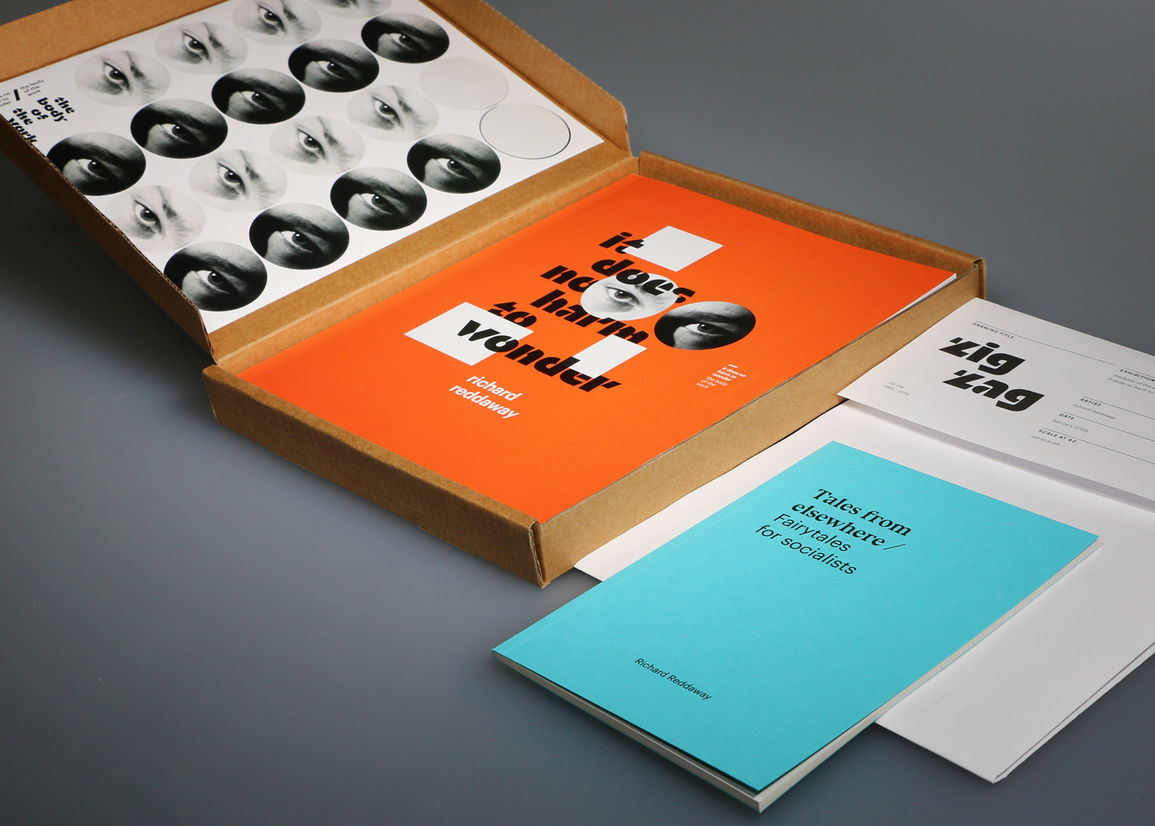
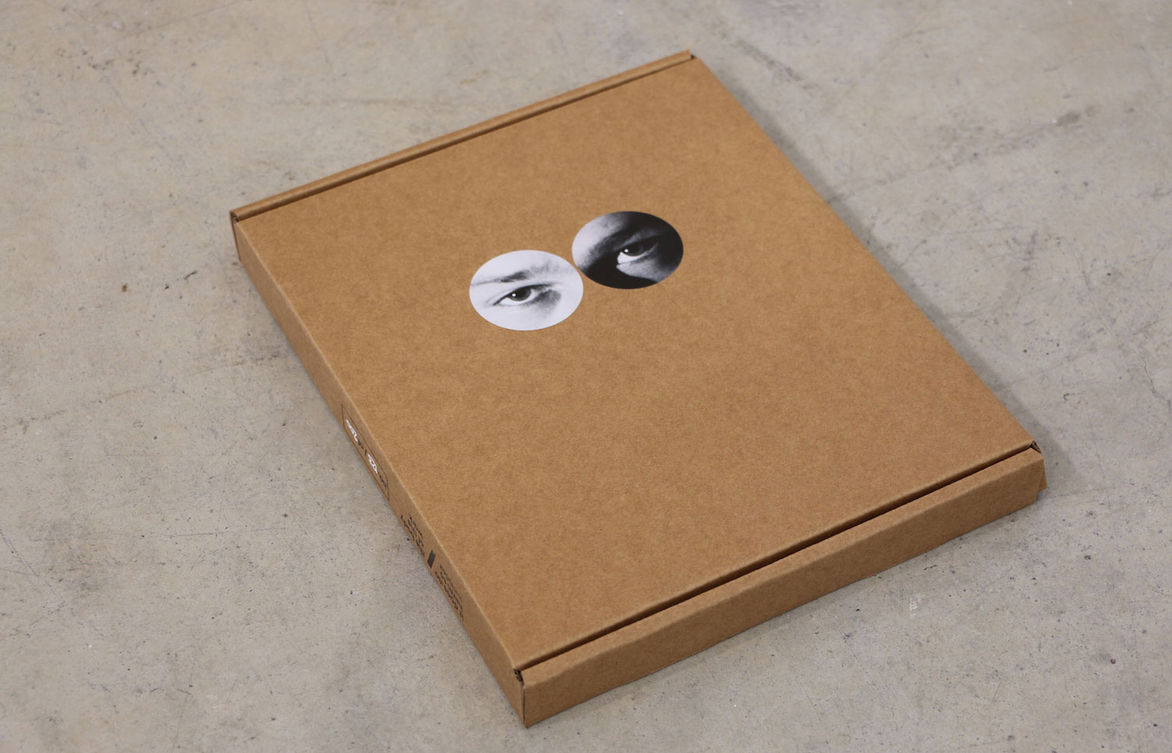
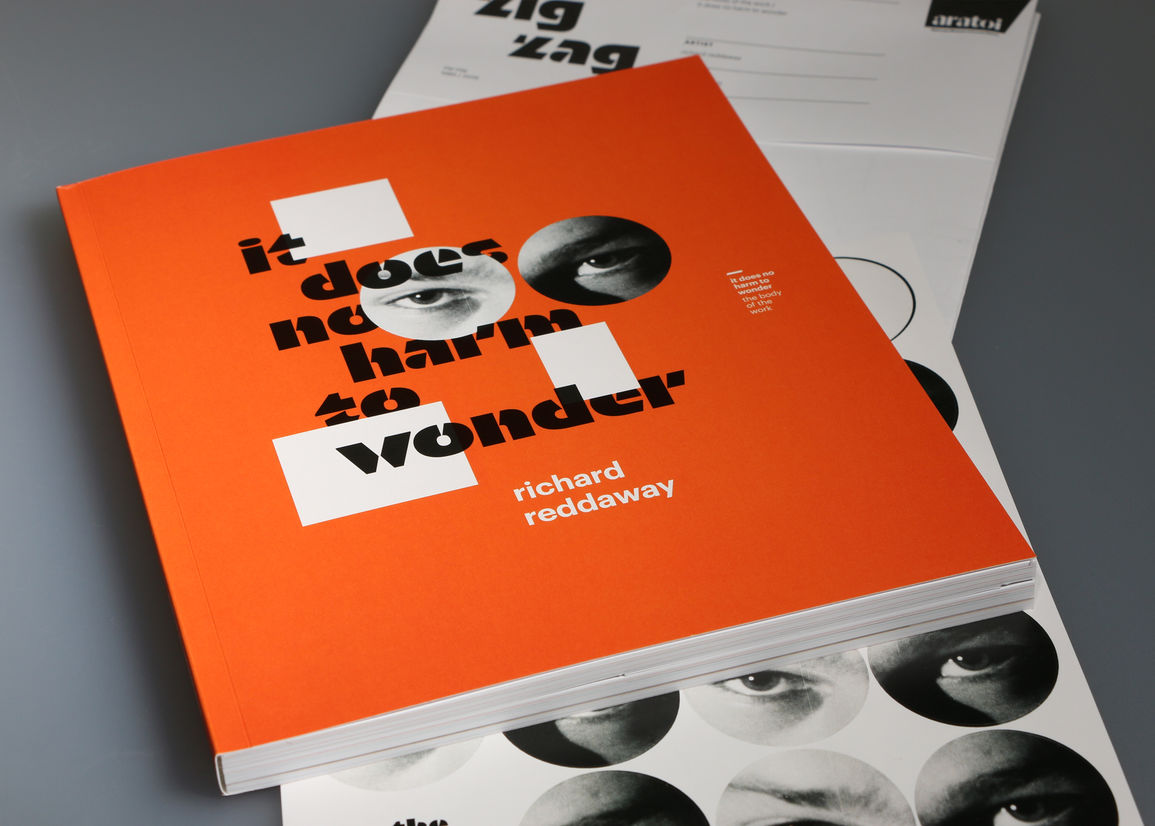
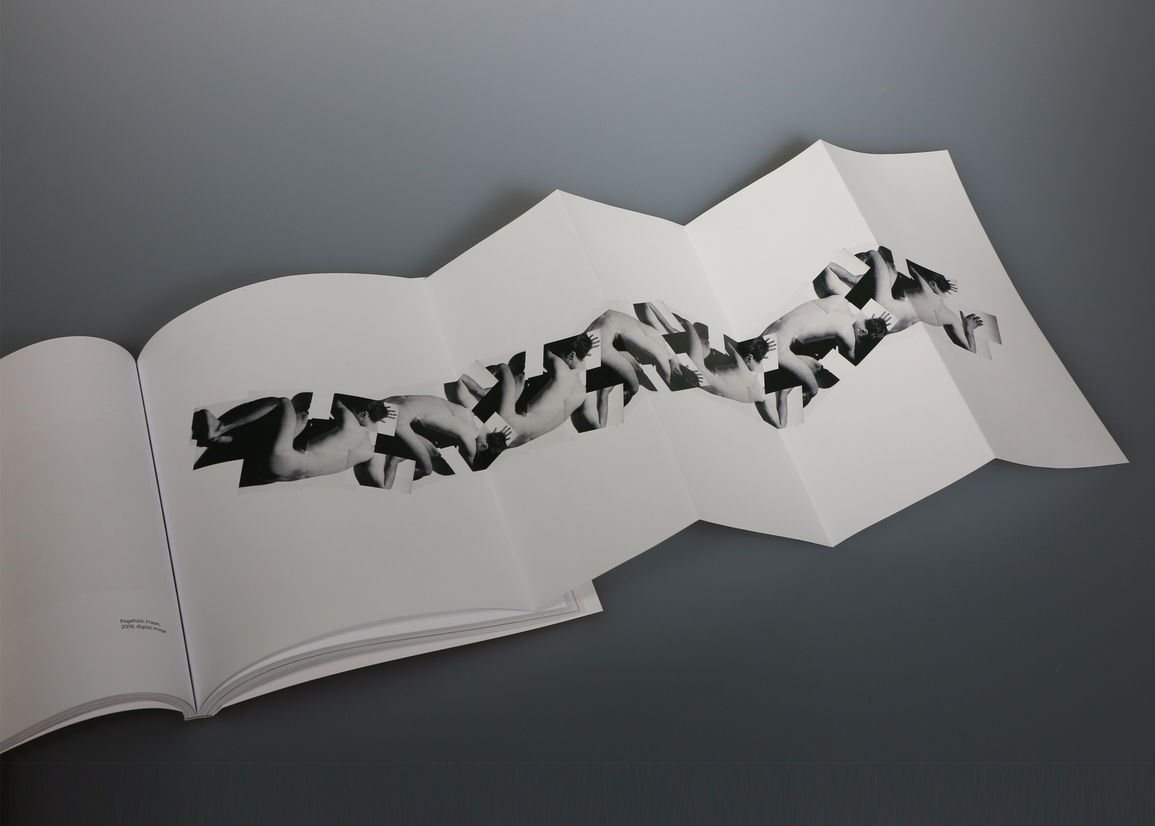
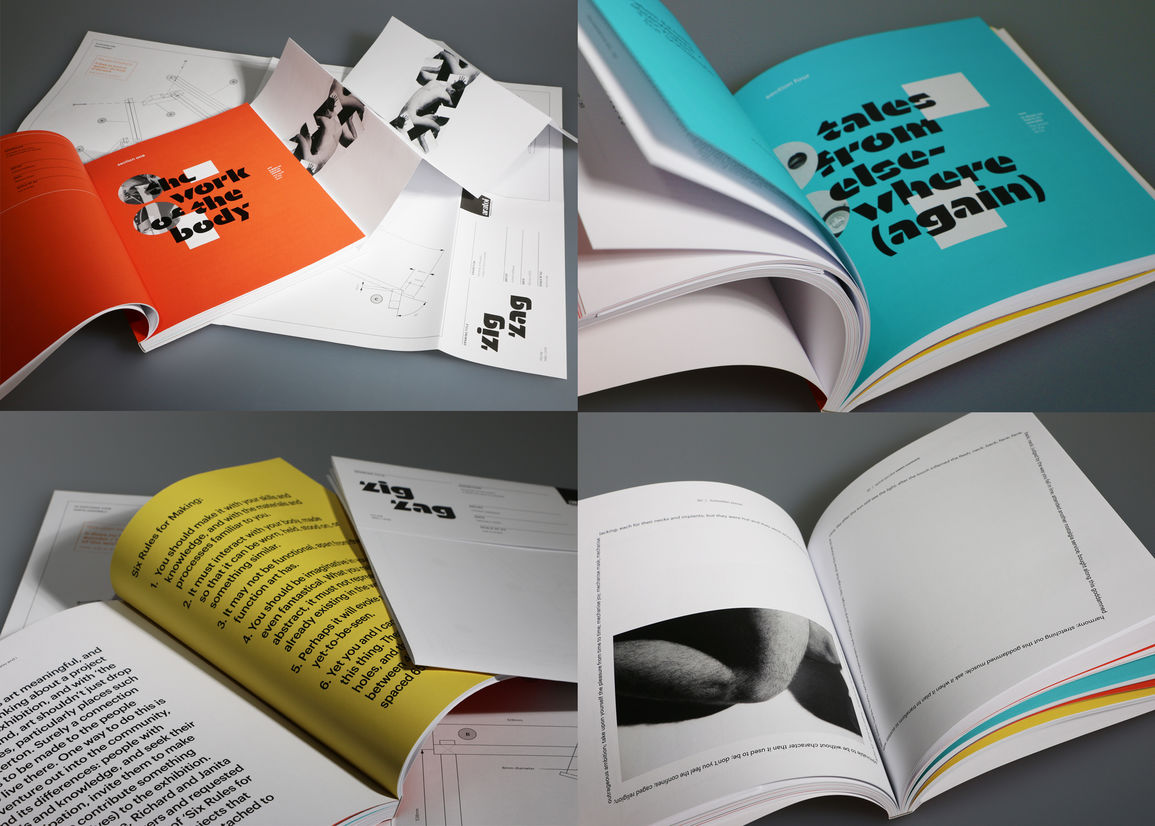
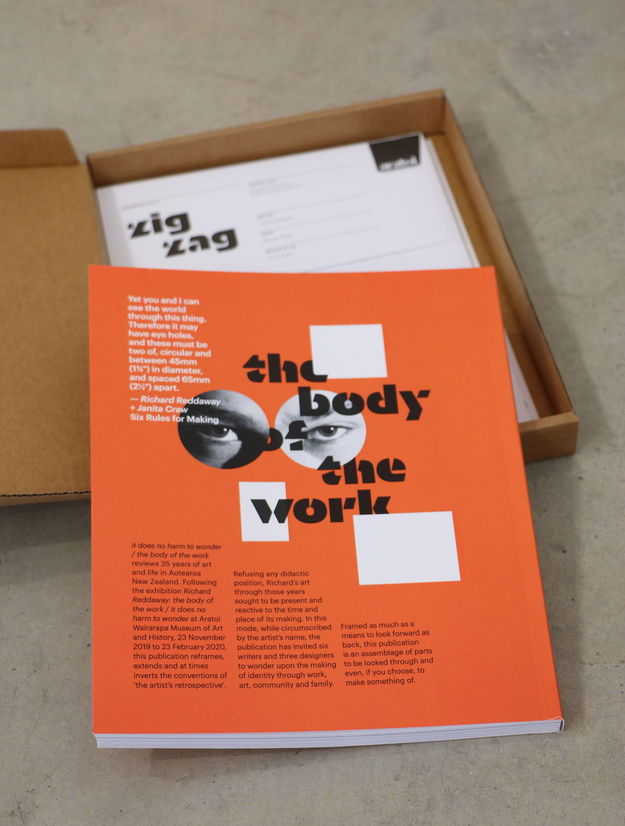
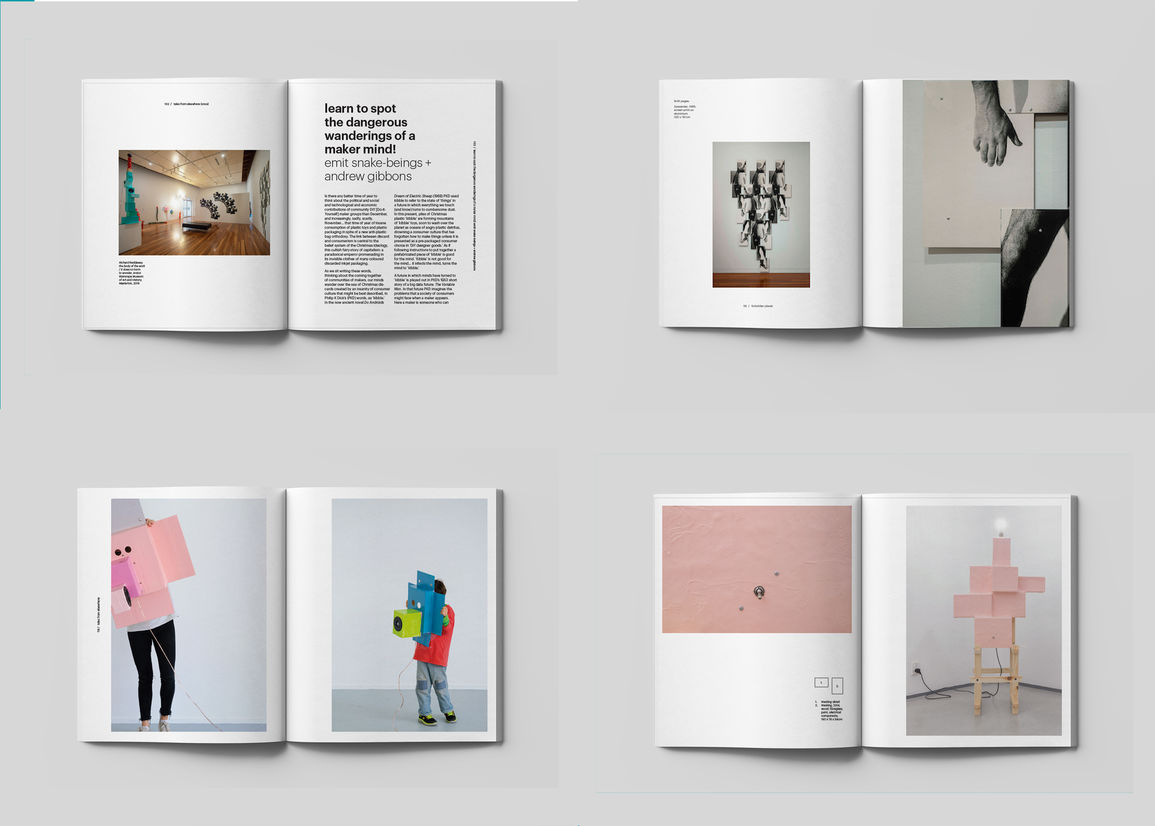
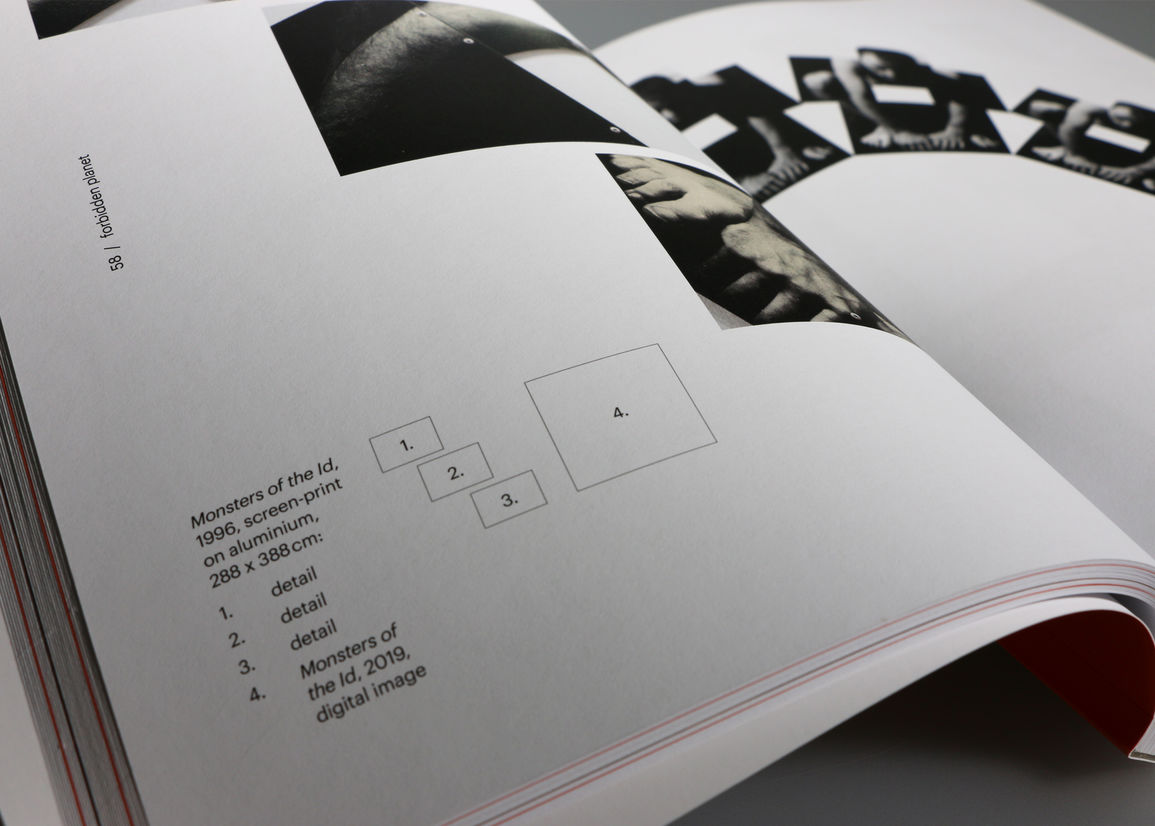
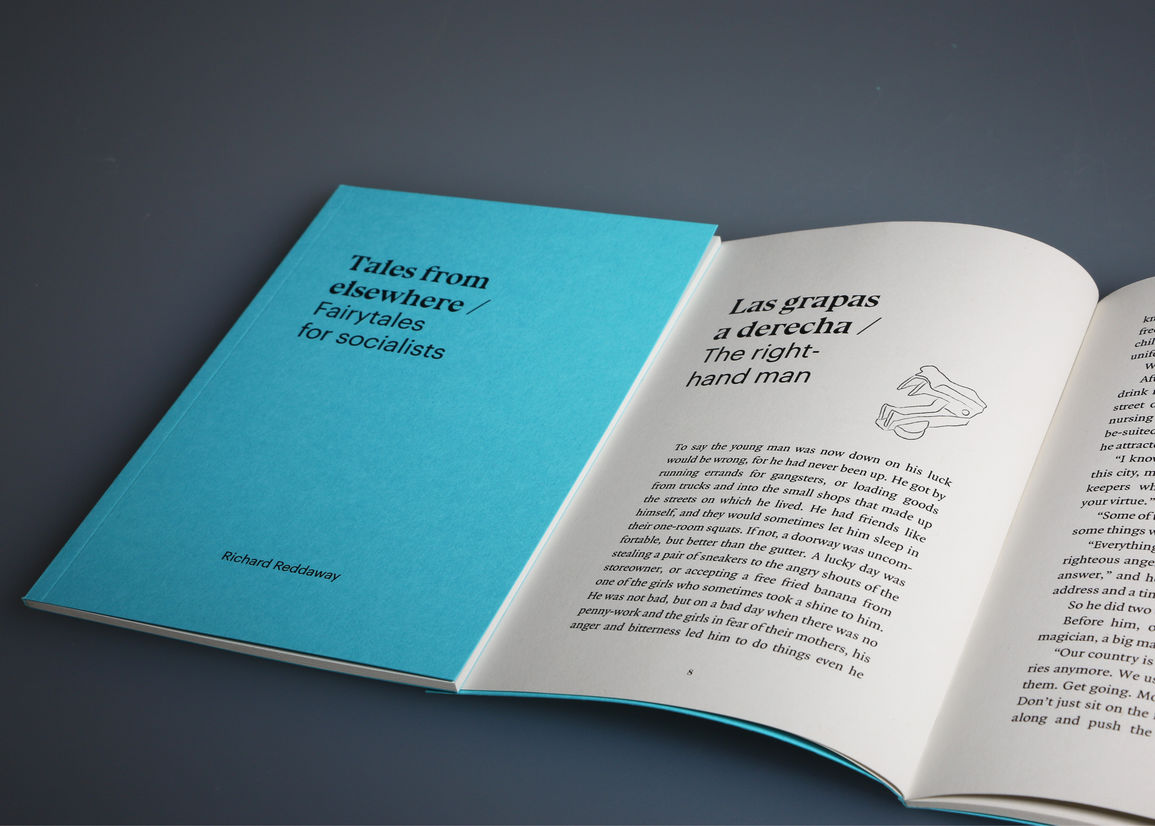
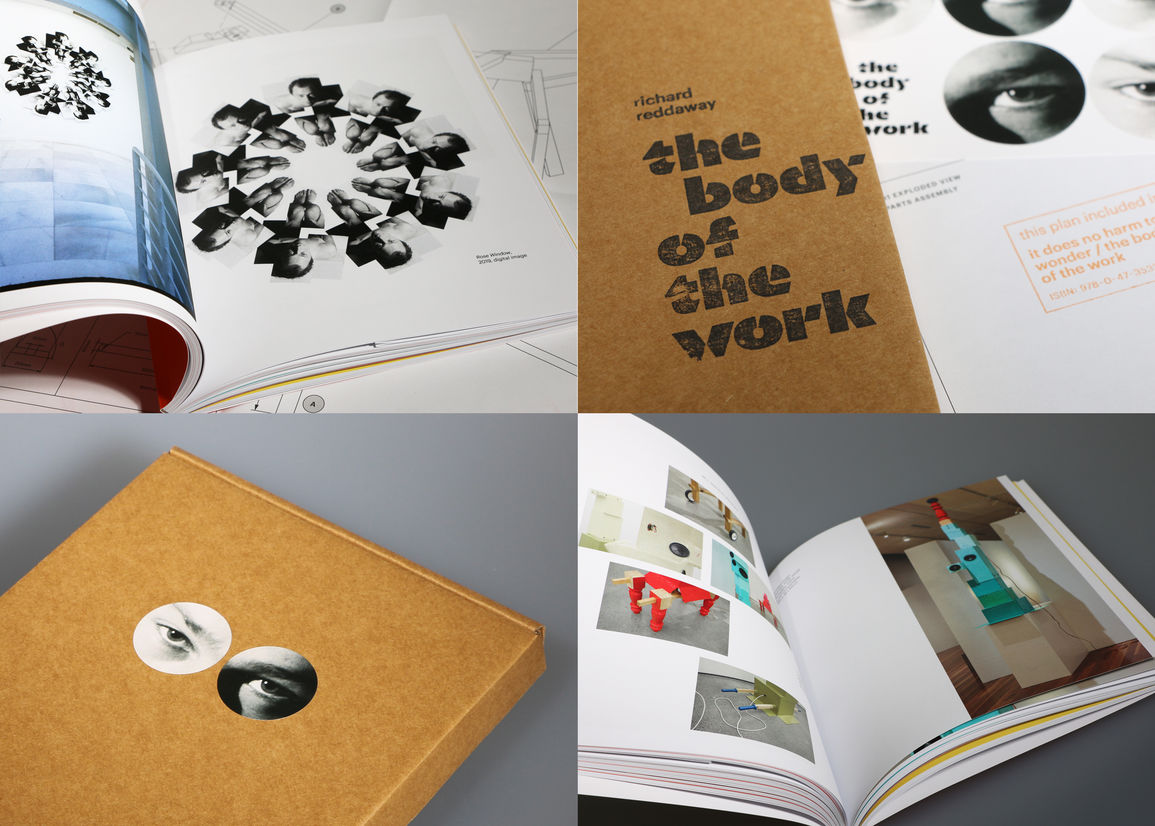
Description:
‘It does no harm to wonder / The body of the work’ was produced on the occasion of a retrospective of sculptor Richard Reddaway’s work at Aratoi Wairarapa Museum of Art and History in 2020. The exhibition surveyed Reddaway’s work from the 1980s to now, exploring enduring themes and tracking them in relation to the socio-political contexts in which they were made. The publication sought to capture Reddaway’s work in this context, as well as nod to movements he references in his practice. But, the brief was for a publication that should be a means to ‘look forward as well as back’, so it consciously adopts a style that does not typify any specific era of Reddaway’s oeuvre, becoming its own part of his ongoing practice.
The publication is an assemblage of parts contained in a box with ‘eye holes’ (actually stickers of Reddaway’s eyes, remixing prior work and material use). We wanted to make an artist’s ‘book’ in the sense of capturing the art, but also extending the invitation for the audience to become enmeshed as a maker in their own right. A sticker sheet is included, as is a plan of Reddaway’s ‘Zig Zag’ sculpture, in a playful invitation to extend the interaction with DIY: ‘parts to be looked through and even, if you choose, to make something of’, as Reddaway describes it.
The book’s typographic system covers essay content, as well as scripts and experimental poetry. There is also a book of short stories produced in the tradition of classic paperbacks. We developed a visual identity that speaks to the ethos of Reddaway’s practice: the central lock-up device uses a modified version of Orientation by Commercial Type, which we chose because its angular stencil form lent itself to overlapping and slicing: a nod to literal and metaphorical aspects of his mahi. This is used on the cover, section openers, and also carried through the environmental graphics in the exhibition itself.
We pushed the budget as far as possible, customising standard elements like the box and plans with rubber stamping – adding our own hands to the ‘body of the work’. Reddaway individually hand-numbered each box, and we hand-folded the plans to allow for a more interesting bespoke fold. Fold-out sections in the book were carefully devised to maximise impact within standard material parameters.
We hope the overall package is a desirable collection in its own right, celebrating Reddaway’s work in the nondidactic maker-player mode of the artist himself.